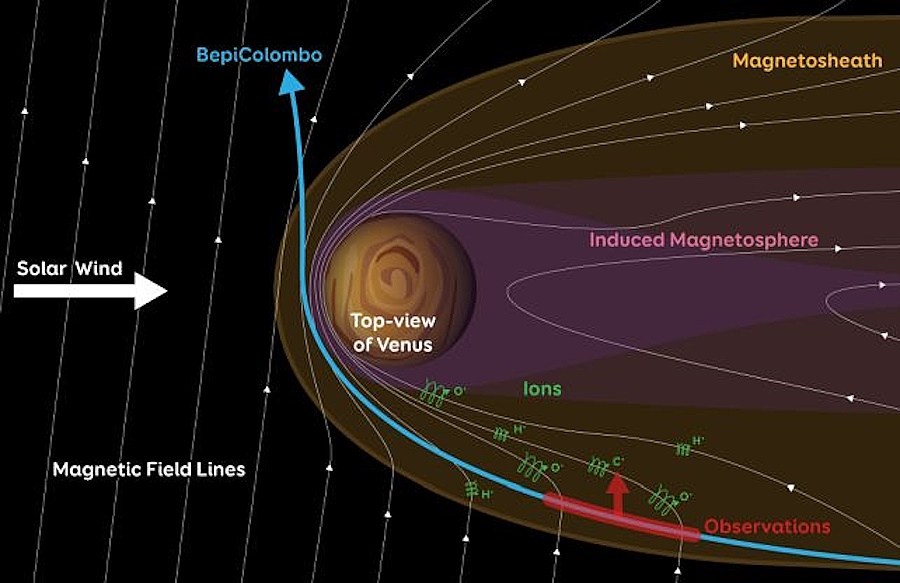Planetary atmospheres are not a perfect impenetrable barrier. Part of the atmosphere invariably leaks out and dissipates into space. Every day, the Earth loses about 90 tons of atmospheric material, but the lost quickly “heals”. The process of atmospheric loss provides us with some clues about other planets. It is believed that Venus was once similar to Earth, with its temperate climate and liquid water on the surface. Now it’s a hellish world, where carbon dioxide and precipitation in the form of sulfuric acid are instead of air.

Flying past Earth’s hellish neighbor, the BepiColombo spacecraft detected carbon and oxygen atoms that were “blown out” of Venus. This discovery, together with previous studies of hydrogen loss, may help uncover what has changed the planet so much.
“Characterizing the loss of heavy ions and understanding the escape mechanisms at Venus is crucial to understand how the planet’s atmosphere has evolved and how it has lost all its water,” notes astrophysicist Dominique Delcourt.
Despite the fact that Venus is our closest neighbor in the Solar System, we know very little about it. Currently, only one mission is studying it closely — this is the Akatsuki orbiter. However, other spacecraft also fly by for gravitational maneuvers, and they do not miss the opportunity to study Venus.

During the BepiColombo mission, a joint mission for the Japan Aerospace Exploration Agency and the European Space Agency, two flights past Venus were carried out in 2020 and 2021. The second flight allowed the probe to get into a part of the magnetic medium that has so far remained unexplored. Venus does not have an internal magnetic field like Earth. Its magnetic field is formed by the interaction of charged particles in the atmosphere and the solar wind, forming a weak magnetic “sphere”.
Between the magnetosphere and the outer boundary is the magnetosheath that BepiColombo passed between Venus and the Sun. The probe’s instruments detected oxygen and carbon, which overcame the gravity of Venus.
“This is the first time that positively charged carbon ions have been observed escaping from Venus’s atmosphere,” notes astrophysicist Lina Hadid.
At least three missions are planned in the future to explore Venus, which can reveal many secrets. Among them are the mechanisms of carbon loss, the activity of volcanoes and the possibility of life in its atmosphere.
Earlier we talked about the existence of active volcanoes on Venus.
According to sciencealert.com
Follow us on Twitter to get the most interesting space news in time
https://twitter.com/ust_magazine


